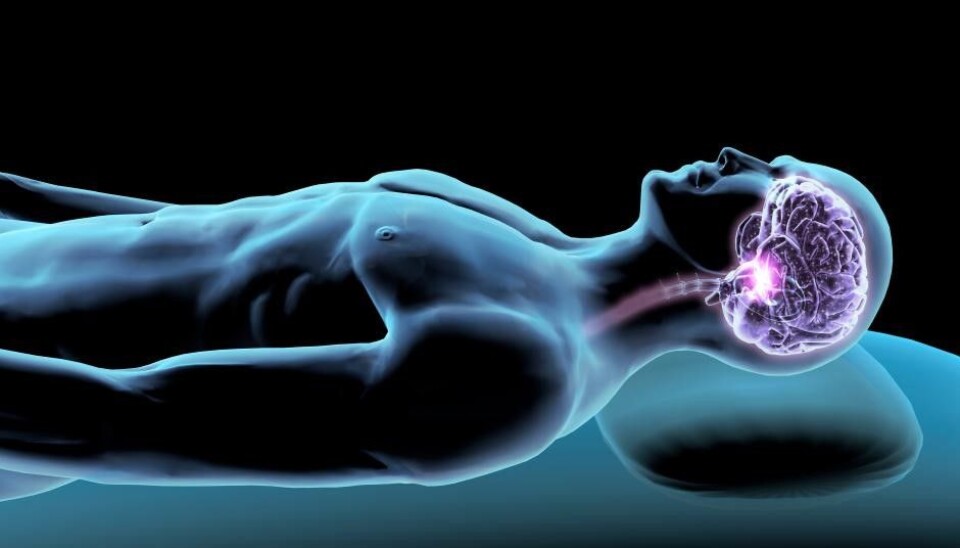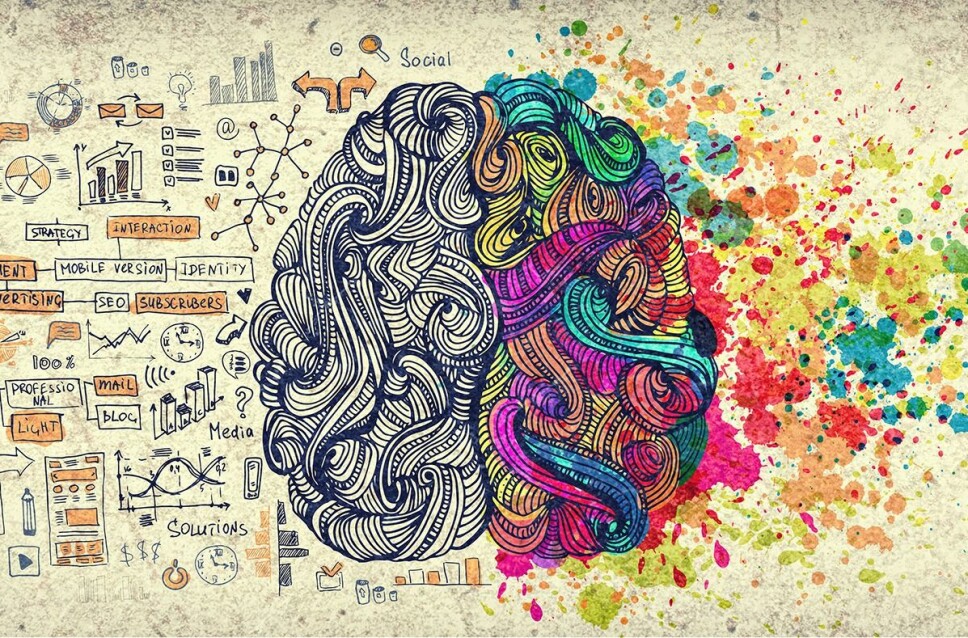The Researchers' Zone

Water channels in the brain can determine how deeply you sleep
COMMENT: A new study has found a possible link between deep sleep and cleansing of the brain, which may prove to be the next step in understanding why we sleep.
It has long been known that the human (and mouse) brain is surrounded by a liquid called cerebrospinal fluid, which protects the brain and transports nutrients.
Recently, however, a research team led by Maiken Nedergaard discovered something new – that cerebrospinal fluid also has an important task during sleep. The team has shown that when mice sleep, cerebrospinal fluid rushes into the brain and cleanses it of the waste that builds up during the day.
It also appears that the deeper the mice sleep, the more powerful the flow of fluid through their brains.
This newly proposed explanation for the need to sleep has been dubbed 'the glymphatic system' and is nicknamed ‘the brain’s washing machine'.
Our research group has now released a study that suggests a correlation between the types of 'water channels' found in our brains and how deeply we sleep. The study is an important contribution to the research describing what happens in the brain during sleep.
Mice rely on aquaporin-4
The 'washing machine’ relies on a water channel named aquaporin-4 (meaning: 'water'-'pore' type 4; types 1-3 are found elsewhere in the body).
This channel is found throughout the brain, but it is located primarily on the border between the brain and the brain membranes.
The aquaporins' task is to regulate the water transport in and out of the brain, which is crucial for the washing system to function.
In laboratory mice that lack aquaporin-4, the glymphatic system does not work, and thus the mice accumulate large amounts of toxic waste in the brain – the same accumulation thought to contribute to the disease process for those suffering from Alzheimer's dementia.
Do humans also have a glymphatic system?
But does the glymphatic system exist in humans?
We think so. Mice and human brains are remarkably similar in many ways; both species need sleep to function optimally, and both species sleep more deeply if they have been kept awake longer than usual.
Therefore, it is logical to assume that humans share the mouse’s need to cleanse the brain – and researchers around the world are working hard to prove precisely this.
It is not possible to examine the cleaning system in humans as directly, as has been done in rodents, since the methods involved (such as inserting microscopes into the living brain or destroying water channels) are dangerous to humans.
Instead, techniques which can show the glymphatic system indirectly (think: hints or clues) are used in human research.
Genes, not microscopes
One example of such a hint can be found in the results of a 2017 Norwegian study in which researchers injected contrast agent (a substance that can be seen in CT or MRI scans) into the subjects’ cerebrospinal fluid via the spinal canal. The contrast agent then dispersed into spaces around the brain.
On subsequent brain scans, the researchers found that the contrast fluid had moved all the way into the brain after a night's sleep, suggesting that fluid movements in and out of the brain also occur in humans at night.
Another non-invasive way to study humans is by exploring genes. The aquaporin-4 gene has thousands of unique variations (as do many other genes), which means that different people most likely have slightly different water channels.
By genotyping the blood of a large group of people, it is possible to investigate whether different variants within the water channel gene have an impact on, for example, sleep patterns or disease. This in turn can provide a clue as to whether the channels are also connected to sleep and waste removal in humans.
Using this approach, researchers have found a few variants in the aquaporin-4 gene that influence how rapidly Alzheimer's disease develops as well as the amount of toxic waste substances found in the brains of people with dementia.
However, until two years ago, the link between the aquaporin-4 gene and deep sleep in humans had not been studied – which is why our research group at the Neurobiological Research Unit set out to do exactly that.
Humans have a group of eight inter-connected gene variants in the brain's water channel
Because we knew that aquaporin-4 plays an important role in the glymphatic system in mice, we set out to investigate which variants exist in the human aquaporin-4 gene and whether these have an effect on sleep.
We started by exploring an online gene database (dbsnp). Here we found a group of eight common genetic variants within the aquaporin-4 gene, called a haplotype, which are almost always inherited together. This haplotype exist in humans in Europe, the United States and East and South Asia (and although the haplotype also exist in other parts of the world, such as South America, it is less common in these regions).
From a previous study, we knew that mice with variants within this haplotype produce fewer water channels.

Variations in water channel genes affect how deeply you sleep
We analysed the aquaporin-4 gene in the blood from 123 subjects who previously participated in one of six sleep studies in Switzerland. In these studies, participants had their brainwaves measured while they were asleep and were kept awake for two days while various tests were performed.
Of the 123 participants, we found that 52 were carriers of the eight gene variants, while 71 people did not have these in their aquaporin-4 gene.
We compared the brain waves of the two groups during sleep and found that those who had the haplotype (and therefore may have fewer water channels) slept more deeply at night than those who did not have the haplotype. This difference was especially pronounced during the first half of the night, when our sleep need is greatest.
Our discovery is exciting for two reasons:
1. We have now found a link between aquaporin-4 and deep sleep in humans, which hints that, as with mice, something glymphatic-like occurs in humans when we sleep.
2. There might be a link between the number of water channels a person has and how deeply that person sleeps, which in turn makes us wonder if the brain uses deep sleep to cleanse itself of waste?
Variants in your water channel gene equip you for an 'all-nighter'
After analysing the subjects' sleep, we decided to investigate whether the gene variants and the differences in sleep was something that the participants could feel themselves – and it was.
Subjects with the aquaporin-4 haplotype in their water channel gene indicated in questionnaires that they were less tired during sleep deprivation (i.e., during the 'all-nighter') than those subjects without it.
The same group also performed best in an attention test performed every 3 hours during the time they were kept awake.
Next steps in the exploration of sleep and the glymphatic system in humans
Our discovery is both new and interesting, but it raises at least as many new questions as it answers.
It is difficult to determine which is the chicken and which is the egg in our results.
We have found a link between water channel gene variants, deep sleep and the response to sleep deprivation – but we still do not know the cause of this link.
Our theory is that the brain 'creates' deep sleep to initiate its washing machine, and if there is not a sufficient amount of water channels for cleansing, the brain makes the most of the ones it has by going into even deeper sleep.
But perhaps it is the other way around? Or maybe the real explanation is something else entirely we know nothing of? And what about Alzheimer's Disease – does this mean that too little deep sleep can cause dementia because the brain is not cleansed enough?
Further research is needed to investigate this. Until then, we hope our results have given you some deeper insights into how the brain’s washing machine and sleep are related.
Translated by Stuart Pethick, e-sp.dk translation services. Read the Danish version at Videnskab.dk's Forskerzonen.
References
'Alzheimer's & Dementia', DOI: 10.1016/j.trci.2017.05.001







